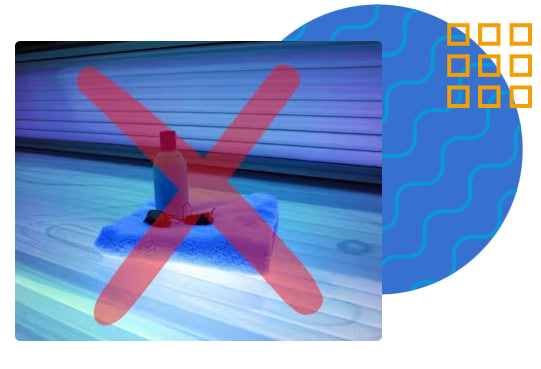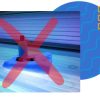Fact Checking Kim Kardashian’s Psoriasis ‘Treatments’
Kim Kardashian brings awareness to psoriasis – and some misinformation.
February 06, 2024
Celebrities are larger than life, trendsetters, and often richer than many can hope to be. Rarely do they feel like real people. But one way this barrier breaks down is when they talk about something difficult or personal.
When reality television star Kim Kardashian talks about living with psoriasis, the world – including the psoriasis community – listens. It can be uplifting to many with psoriasis to see a celebrity persevering through the same struggles with flare-ups that they face. So, when Kardashian recently mentioned that she uses the tanning bed in her office to treat her psoriasis, it caused quite a stir.
Many people living with psoriasis find that their symptoms are better during the summer months when there are more rays of sunlight reaching their plaques. It is not a large jump to think that artificial sunlight in tanning beds could be one way to treat your psoriasis, but this is not the case.
“Ultraviolet light therapy can work very well for psoriasis,” says Joel Gelfand, M.D., FAAD, professor of dermatology and epidemiology at the Perelman School of Medicine at the University of Pennsylvania, “But it’s a specific wavelength of light in the ultraviolet B spectrum. Specifically, the wavelength 311.”
Dr. Gelfand says that tanning beds are not a recommended treatment method for psoriasis. “When people use tanning beds,” explains Dr. Gelfand, “they’re mainly using ultraviolet A, which will tan the skin but could cause damage to the skin in terms of risk of skin cancer, melanoma, and aging of the skin. But it’s not the wavelength that’s particularly effective for managing psoriasis.”
Dr. Gelfand also mentions that natural sunlight is made up of mostly ultraviolet A and some ultraviolet B. “Sunlight, because it has a lot of wavelengths of light that don’t help psoriasis but damage the skin, is not an ideal way of managing the disease,” says Dr. Gelfand, “compared to using a medical source of light, which is just the wavelengths that are helpful without the wavelengths that are not helpful.”
Phototherapy, also known as light therapy, is prescribed by a dermatologist and can be done in a health care provider’s office or at home using a phototherapy unit. “Home phototherapy in the modern era is almost identical to in-office phototherapy,” says Dr. Gelfand, “It is the same type of bulbs, 311 UVB, that people are getting.” A research investigation called the LITE Study, is exploring the effectiveness of home vs. in-office phototherapy on all skin types in real-world practice. The LITE study is the result of a long standing collaboration between NPF, Dr. Gelfand, and Kristina Callis Duffin, M.D., MS, from the University of Utah .
Kardashian also shared how she was alleviating her recent psoriasis flare-up by covering her plaque with lotion and wrapping it in plastic wrap. In the before and after photos she shared on Instagram, this certainly made a difference in the appearance of the plaque on her leg.
(Learn how to best manage your flares by requesting our free flare guide.)
“Using plastic wrap to augment topical therapies is something we seldom do now because we have more effective topical medications,” says Dr. Gelfand. He adds that wrapping plaques with plastic wrap, also known as occlusion, is typically done with topical medication prescribed by a dermatologist, rather than over-the-counter lotions.
“The reason why we used to use plastic wrap is that psoriasis patches tend to be very thick. It’s hard to get the medication to penetrate appropriately through the thick scale and essentially by wrapping the ointment or cream in place, you’re increasing the potency of that medication,” says Dr. Gelfand. “The downside of that is that you could increase the side effects, especially when using topical steroids, and increase absorption of the medication as well. So, such an approach should really never be done without the supervision of a dermatology provider.”
Dr. Gelfand says that treatments for psoriasis have come a long way in the last several decades and that many topical treatments do not need to be occluded because they are better able to penetrate the psoriasis plaque than some of the older topical treatments.
While it can be heartening to see that celebrities can be just like us – dealing with the same difficulties that we do despite their wealth and fame – it is important to remember that they are not health care providers, and even more importantly, they are not your health care providers. Be sure to discuss any changes to your treatment plan with your dermatologist before trying anything new.




